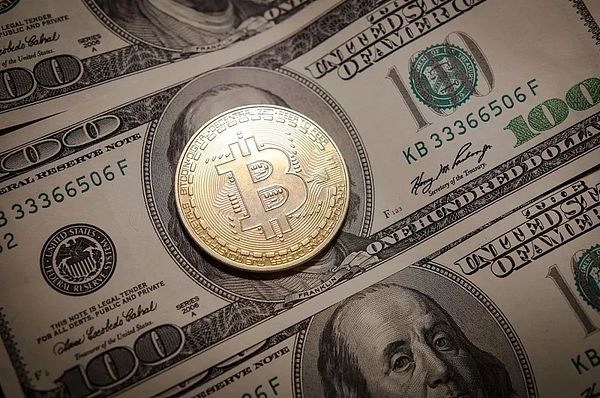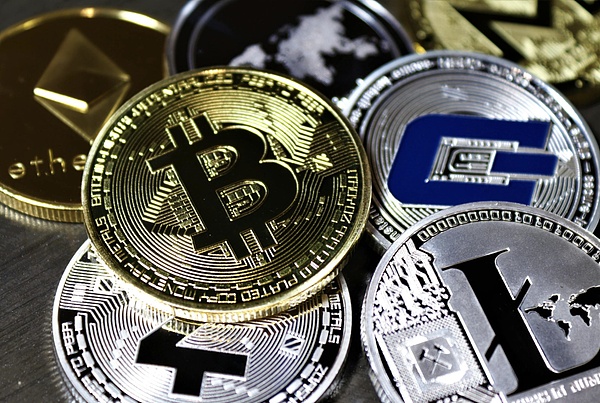Author: Lawyer Liu Honglin
In the eyes of most Web3 practitioners, decentralization can be absent, but Token must be present.
The reason is that, in addition to the tamper-proof and privacy protection supported by the underlying technology, blockchain can also provide timely and effective incentives to multiple network participants through Tokens to achieve the ideal state of distribution according to work. In addition to this ideal blueprint, another reason why Token is so popular is that it has received widespread attention as an important means of financing.

In 2017, the relevant regulatory authorities in mainland China issued the well-known "94 Document", which clearly restricted the issuance and financing activities of tokens, especially the behavior of raising funds from the public through the initial coin offering (ICO), which was expressly prohibited. In 2017, a white paper was enough to raise millions of dollars in financing, and the entire industry was filled with a fanatical and disorderly atmosphere. The introduction of the 94 document is undoubtedly reasonable, because its core purpose is to prevent illegal fundraising, pyramid schemes and other behaviors that disrupt the financial order. However, this document has also caused many practitioners to misunderstand: as long as the project party issues tokens, it is illegal and may even involve criminal offenses. This view is not only widely spread inside and outside the industry, but even some legal practitioners and regulators hold similar views.
However, in fact, token issuance is not considered illegal across the board. The key lies in the nature of the token itself, the object of issuance, and the legitimacy of the project itself. In order to ensure compliance operations, entrepreneurs need to deeply understand the nuances of these aspects in order to truly avoid legal risks.
Token type is important
The compliance of a token depends first on its type. According to industry practice, tokens are usually divided into utility tokens and security tokens. Utility tokens are mainly used for products or services within the platform, giving users the right to use them without involving investment returns. In contrast, security tokens have investment attributes, and token holders expect to obtain economic returns from the project. These two types of tokens are subject to completely different supervision under the legal framework.
The compliance of utility tokens is usually stronger because they are mainly used for actual services or functions on the platform rather than as investment tools. In some jurisdictions, such as Singapore and Hong Kong, the issuance of utility tokens is still legal. As long as the use of the token is linked to the platform service and there is no economic return, utility tokens usually do not trigger strict securities supervision. For example, users can use utility tokens to purchase platform services, participate in voting or enjoy rewards without being considered an investor.
However, the regulatory requirements for security tokens are much stricter. Taking the United States as an example, the U.S. Securities and Exchange Commission (SEC) has set a very high threshold for the issuance of security tokens, requiring all security tokens to pass compliance review. If the token has obvious investment attributes, or the token holder expects to gain benefits from it, the issuer must comply with the securities law. This situation also applies to China. Document 94 clearly stipulates that unapproved public issuance of token financing is likely to be identified as illegal issuance of securities or illegal fundraising.

Distinguishing the type of token is the first step in Token issuance. Clarifying the nature of the token will help entrepreneurs choose the appropriate compliance path. If entrepreneurs plan to issue tokens for the international market, they must understand the legal requirements of various countries for token types and ensure that token issuance complies with local laws and regulations. For example, the Blockstack project was approved by the US SEC in 2019 and conducted its first compliant security token issuance (STO). This case shows the legal path for token issuance in compliance with US securities laws. Although the process is complicated, compliance is essential for security tokens. Projects that do not take a compliant path face huge risks. For example, some projects claiming to be "functional tokens" actually provide investment returns and are eventually identified as illegal securities issuance and are subject to strict penalties.
Token fundraising targets are important
In addition to the token type, the choice of fundraising targets is also crucial. China's regulatory policies have taken severe measures against token financing activities for the general public, especially public fundraising activities through ICOs, because such activities are usually accompanied by risks such as fake projects, capital pools and illegal fundraising. In order to prevent these risks, the regulatory authorities have clearly required that all ICO activities for the general public must be stopped and the projects that have been carried out should be cleared. This means that in China, token issuance should avoid being oriented to the general public.
The starting point of China's regulatory policies is to protect investors, especially ordinary investors who do not have professional investment capabilities. ICOs that are open to the public are often extremely risky and can easily cause a large number of investors to suffer losses, which is one of the main reasons for the issuance of Document 94. In contrast, qualified investors usually have strong risk identification and tolerance capabilities, so raising funds from qualified investors can effectively reduce legal risks.
In the international market, the standards for qualified investors are also very strict. For example, in the United States, qualified investors must meet specific income and asset standards before they can participate in private financing activities of security tokens. This restriction mechanism ensures that only investors who are able to bear the risk can participate in token financing activities. For example, a blockchain project publicly raised funds from non-qualified investors, claiming that investing in its tokens would yield high returns. These investors were mainly ordinary members of the public, and eventually a large number of investors suffered heavy losses, and the person in charge of the platform also faced legal sanctions.
The Token Project Itself is Important
Many entrepreneurs tend to fall into a misunderstanding, thinking that as long as the Token is defined as a functional token and is quite restrained in the fundraising object, then their project is well compliant and everything will be fine. But in fact, whether the operating model of the project itself complies with legal provisions often determines whether the entire project is compliant.

For example, China has strict legal restrictions on industries such as gambling. For example, if a project involves gambling-related businesses, or conducts gambling-like activities through virtual currency, even if the token issuance method and fundraising objects comply with regulations, the project will still be considered illegal. For example, a domestic blockchain project involved illegal fundraising and gambling and was closed down by the public security organs. When the project party issued tokens in the early stage, it did not raise funds from the general public, but the project itself carried out gambling business through virtual currency, attracting a large number of Chinese users to participate. Although the project party avoided ICO risks in terms of token issuance, its illegal operation eventually led to the closure of the entire project, and the relevant persons in charge also faced criminal liability.
Similarly, some blockchain projects use pyramid scheme-style marketing methods to attract investors through token incentives and promote them layer by layer, which often violates China's legal red line on pyramid schemes. This is why we always advise entrepreneurs: It is far more important to pay attention to the legality of the project itself than the token issuance itself. If your project model has potential legal risks, no matter how compliant your token issuance is, the future of the project will still be in trouble.
Mankiw's Compliance Advice
Tokens are more like icing on the cake in most blockchain projects. How beautiful this flower can bloom depends on whether your project itself is solid enough. From the perspective of compliance, there is no essential difference between Web3 entrepreneurs and previous Web2 entrepreneurs from the perspective of legal compliance. In order to effectively avoid legal risks in the issuance of tokens, Honglin Lawyer gives you the following tips:
1 Clear the type of token
Entrepreneurs first need to confirm whether the tokens issued are functional tokens or security tokens. If they are functional tokens, they must be used only for services or products within the platform and do not have the nature of investment returns. If they are security tokens, they must strictly abide by the securities laws and regulations of the country where they are located to ensure that the issuance of tokens meets relevant requirements.
2 Carefully select fundraising targets
When issuing tokens, entrepreneurs must strictly limit the issuance targets and avoid raising funds from the general public. Especially in China, the act of publicly raising tokens is very likely to trigger regulatory risks. Therefore, limiting the token sales targets to qualified investors and licensed funds is an effective compliance strategy.
3 Do a good job in the commercial compliance of the project itself
The business model design of the project is also crucial. Entrepreneurs should avoid adopting high-risk structures such as pyramid schemes and Ponzi schemes, and ensure that the service model of the project complies with legal requirements. In particular, for activities such as gambling, illegal fundraising involving virtual currencies, it is imperative to take technical measures to block Chinese users to avoid unnecessary criminal liability.
In general, the issuance of tokens does not inherently mean illegality, but its legality depends on multiple factors, including the type of tokens, the target of fundraising, and the business model of the project itself. Innovations in the blockchain industry have brought new opportunities to the world, but while exploring these opportunities, entrepreneurs must clearly understand the legal requirements of different jurisdictions and promote project development through compliant paths. Whether it is a functional token or a security token, entrepreneurs should operate with caution to ensure that their projects are within the legal framework. Therefore, only with a solid project foundation and strict compliance control can tokens truly become a boost to project development rather than a source of legal risk.
 JinseFinance
JinseFinance
 JinseFinance
JinseFinance JinseFinance
JinseFinance JinseFinance
JinseFinance JinseFinance
JinseFinance Catherine
Catherine Davin
Davin Coindesk
Coindesk Cointelegraph
Cointelegraph Cointelegraph
Cointelegraph Cointelegraph
Cointelegraph